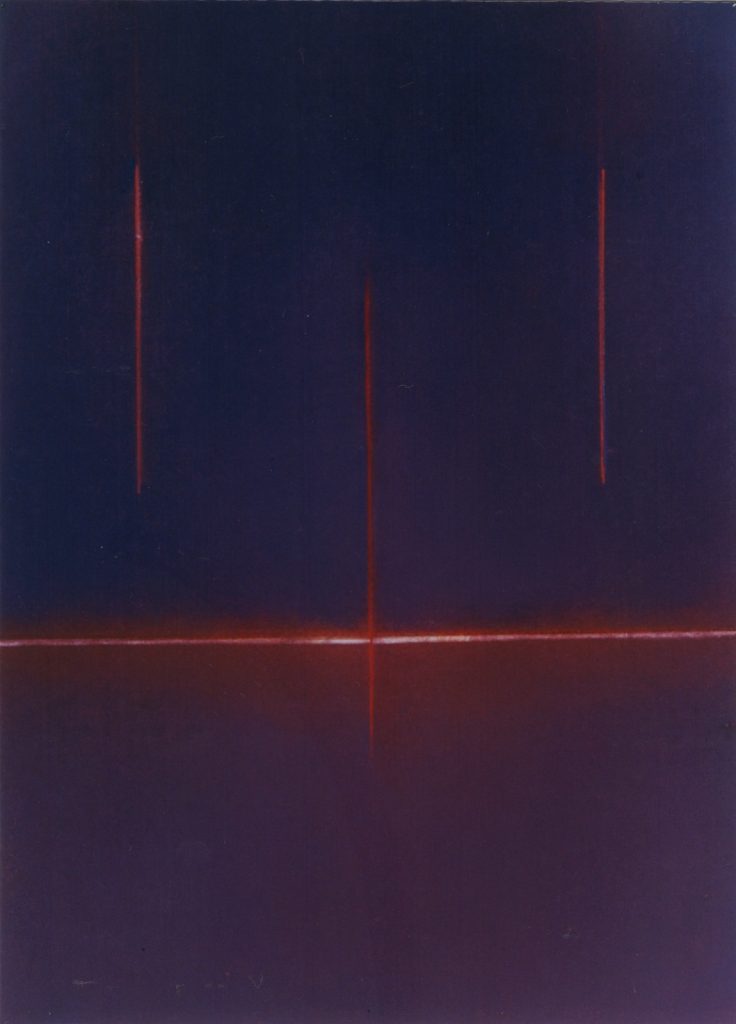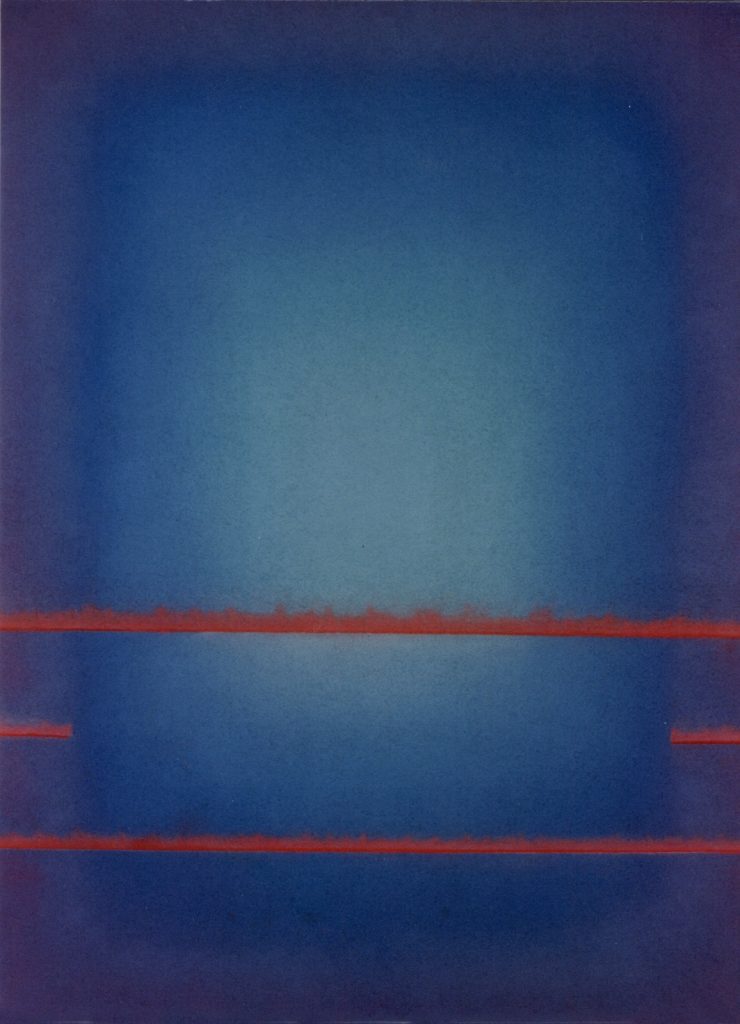pastel, hahnemuhle paper – 76xx57cm – 1999
Three vertical lines fall from above, suspended in timeless space. The central line creating a frisson as it intersects the glowing horizon. Using an eraser, I pulled back the colour from the surface of the paper, entering deeper into the skin of the substrate. There is a tension between the hard edge of the lines and the softer fields of the glowing colour.







